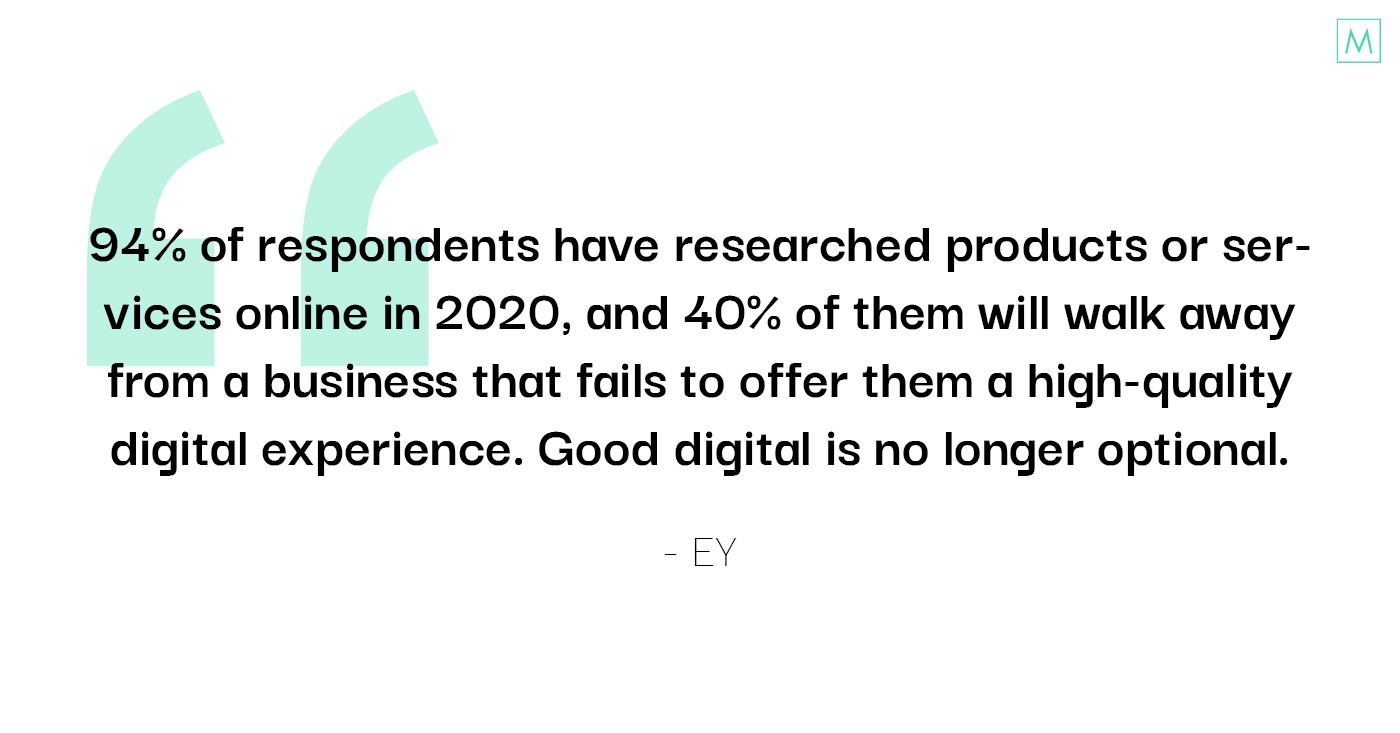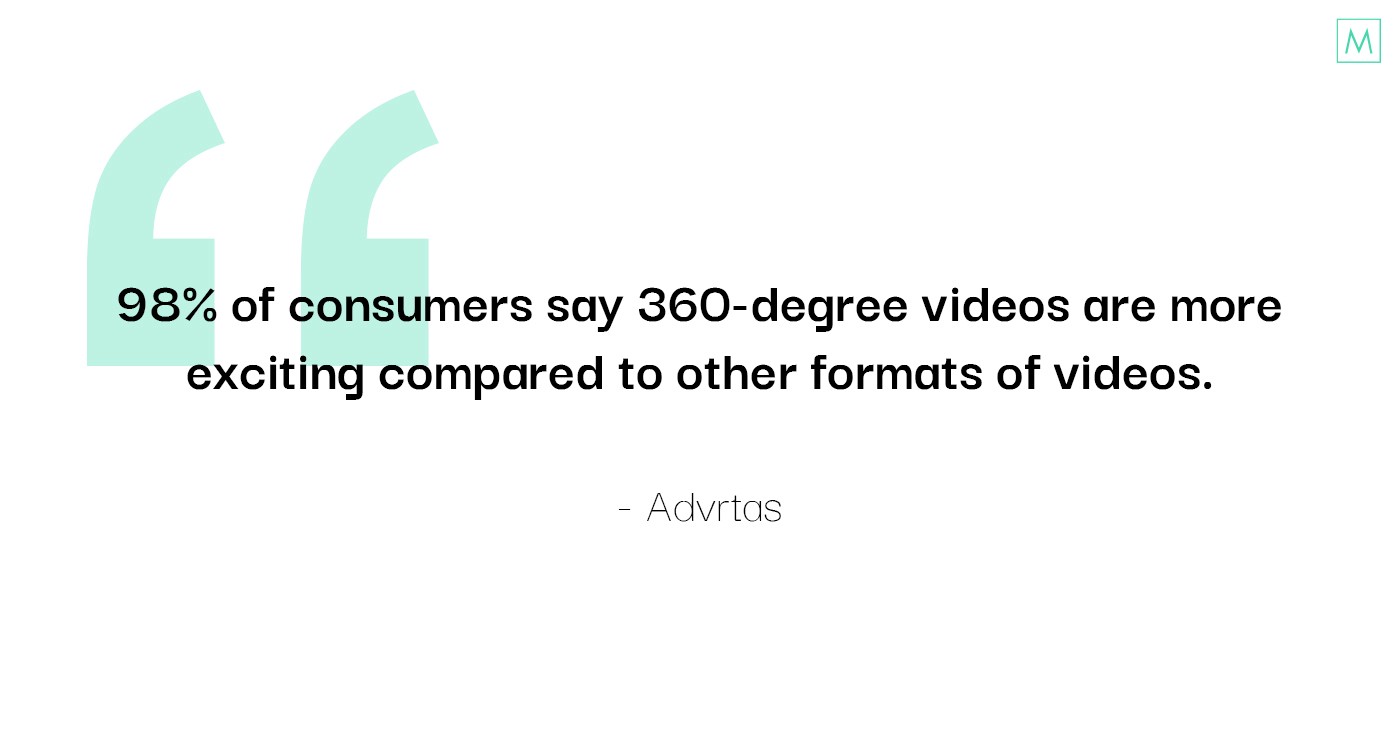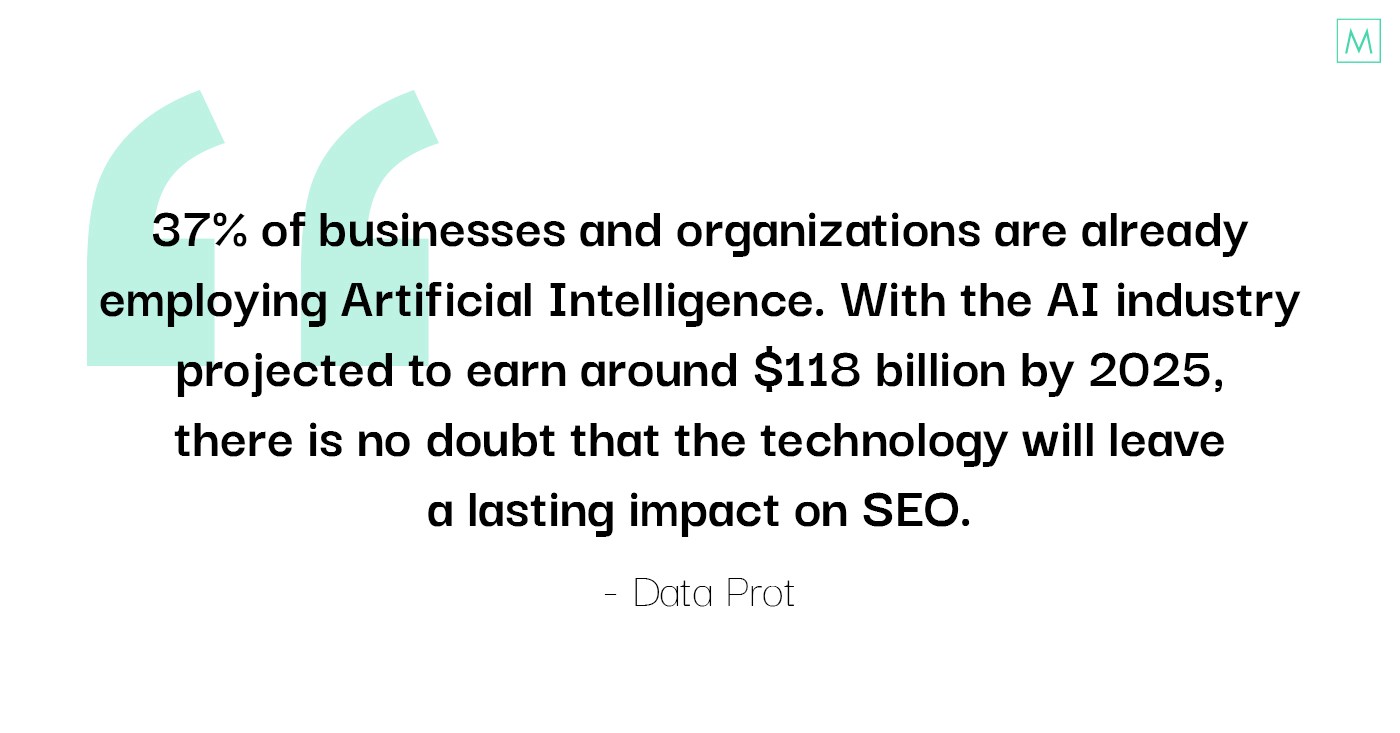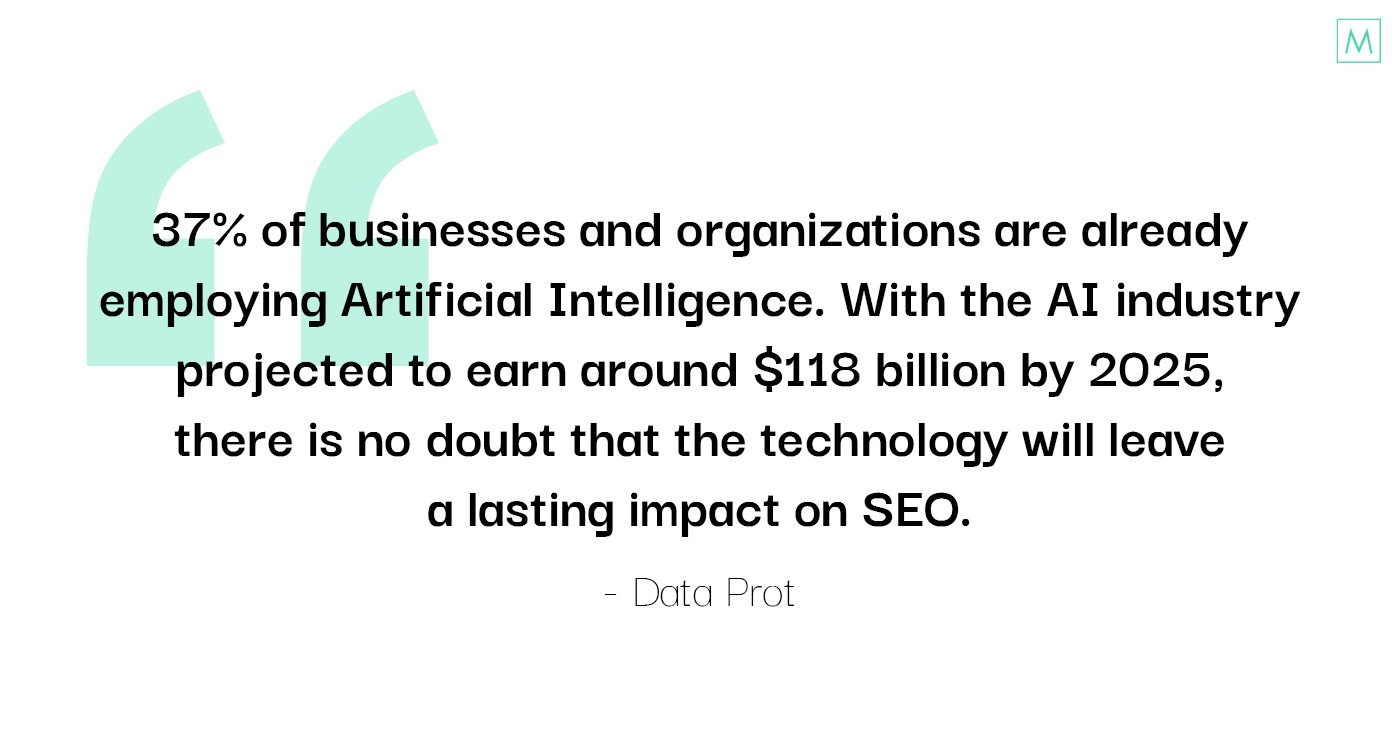The world of marketing is transforming at a high-speed pace, and it can be hard for non-marketers to keep up. Recent research by Adobe discovers that marketers agree that marketing has changed more in the past two years than in the past 50. Moreover, 66% of all marketers think companies won’t succeed unless they have a digital marketing approach.
Fortunately for today’s businesses, we have the infinite wonders of digital marketing, helping us to understand the customer (and where our marketing efforts are succeeding or falling flat) like never before. At the same time, traditional marketing is less and less effective on average, with print advertising nearly an endangered species, and radio and TV advertising only being capable of the most shallow of targeting.
On the other hand, your clients are most likely to be embedded firmly in the digital space. By using digital-first marketing, you can find your tribe, reach them where they are, and share your why in a way that resonates.
According to the latest Digital Australia report by Ernst and Young, 94% of respondents have researched products or services online last year, and 40% of them will walk away from a business that fails to offer them a high-quality digital experience. Good digital is no longer optional.

In 2020 many businesses have adopted digital-first strategies and found innovative new ways to reach their customers even though their shop doors have had to stay shut for months on end. We all have had to adjust to new ways of living and working, and all these developments and the uncertainty they have caused have directly affected marketers.
But for those who continually investigate their goals, performance and objectives and who continue to be adaptable in such a challenging environment will be best positioned to survive and grow. Staying ahead of emerging technology and market trends will be a key part of that.
The rampant growth in e-commerce in 2020 emphasizes how essential it is to stay competitive online. With that in mind, we bring out four big trends to consider when building your digital marketing strategy for the closest future.

Video marketing
Video marketing is one of the most robust ways to interact with modern customers in the digital space. Videos have become the most sought-after and preferred type of content on almost all online platforms. From news feeds to social media and magazines, we like to watch videos everywhere since they transfer information faster and more effectively.
In 2021, brands can use the power of video marketing to drive audience engagement and increase conversions.

More live video streaming
Even though live video streaming has been popular before, it gains momentum in 2021 as well. We can’t ignore the massive power of Twitch TV that promotes live video streaming as the most engaging way to interact with the audience. On Twitch, it started as game streaming but now it has grown into a new content type gaining popularity among music performers, podcasters, and even yoga teachers!
People love to interact with influencers in almost real-time. This trend has become even more actual during the coronavirus lockdown when we all stay at home. Fairly enough, people expect to see higher quality from pre-recorded videos and are much more forgiving in regards to live-videos. Therefore, you can save lots of money, as you don’t need the production and editing expenses.
Moreover, you’re getting more views when live-streaming than from pre-recorded videos because social media algorithms are trying to encourage live content more at this moment.

The power of animated explainer video
It is a powerful attention grabber that makes your message heard. It breaks down complicated ideas into simple scenes. Whether you use an animated video on the top of your sales funnel targeting new leads or at the very bottom just to retain and entertain existing customers, it drives good results everywhere.
Animation always has the power to transfer emotions. To convey emotions more effectively, an illustrator exaggerates them on the image and makes the marketing message even more expressive and distinct. Moreover, an explainer video sells without being salesy. The goal of selling is not even listed in the top three aims (to explain, to educate and to entertain). It sounds illogical; however, being unsalesy, an explainer video is a powerful selling tool.
In 2021, we expect the growing popularity of animated explainer videos. Even today, lots of companies all over the world use animated videos to promote their products and services creatively, educate customers about how to use them, onboard new employees, and for dozens of other corporate and marketing purposes. We anticipate seeing even more benefits of animated explanatory videos for businesses across different industries.
360-degree video experiences will be desired
Around 74% of video marketers find success from using 360-degree videos, according to Wyzowl. They create a whole new level of immersive experiences, promising higher engagement and longer viewing times. They generate emotional engagement through a unique perspective and are now much easier to shoot and deploy to various platforms and devices. You do not need any expensive hardware or software to enjoy the experience.
All you need is a mobile device or desktop computer to watch on YouTube, Facebook, and other players, where you can explore content in all directions with a few simple moves. Combined with the rise in augmented reality (AR) and virtual reality (VR) it can pack a powerful brand punch for your video content strategy.
360-degree videos create a feeling that customers try a product before purchasing it. They constitute a new visual experience for consumers that can help brands earn their loyalty. 98% of consumers say 360-degree videos are more exciting compared to other formats of videos.

Shoppable videos will make a big splash
When Instagram added the “swipe up” feature allowing users to go from Stories straight to product pages, the phenomenon of the shoppable video was born. In 2021, you can look forward to seeing a huge increase in its popularity, as shoppers will continue to prefer shopping online to going out in public places. And it won’t just be more IG stories, either.
Just imagine. What if you could watch an episode of Gordon Ramsey’s Masterchef and add ingredients to your cart with a click? Amazon has already experimented with shoppable entertainment with its show Making the Cut. The fashion show hosted by super celebs Tim Gunn and Heidi Klum let viewers buy their fashion picks with a click. The show ended up being a failure. Why? Because the product stock sold out so fast that most viewers were left empty-handed…
Amazon and Instagram are on-board with shoppable entertainment, and Netflix has the technology for it too. Get ready to see it much more in 2021.

SEO
The SEO landscape is constantly changing and evolving. It can be a challenge for any marketer to keep on top of. Some of the top trends for 2021 include Google My Business, semantic search and the evolution of Artificial Intelligence.
Local search listings will impact SEO strategies
In a zero-click search, the user’s query is answered via the SERP itself. They thus don’t click on any of the ranking results. One reason for the rise in zero-click searches is the increase of featured snippets. Many zero-click searches are local searches that present the results on the SERP in what’s been dubbed a “local pack.” How do you get your business into that local pack?
Start by creating a Google My Business page, which has become very popular as the demand for local search has surged.
Google continues to add extra features so that searching gets the best outcomes. A well optimised Google My Business listing can make a big difference if people are considering your business. It can also improve your local SEO ranking.

Semantically related keywords will become more important
SEO professionals used to concentrate on primary keywords as if they had blinders on. Now, we understand secondary keywords are just as valuable. Semantic search and intent optimization will gain further prominence in the future.
Google isn’t just looking at strings of words anymore. It’s interpreting query context and trying to discern a user’s search intent, meaning that the more relevant information provided — via logically related primary and secondary keywords — the better.
To truly address the semantic search, create content designed to answer a question that your target audience would pose. Optimize content for topic clusters instead of adjusting solely to keywords. Finally, use structured data when logical. Most importantly, don’t write for bots but people.
AI to show greater impact
BERT (Bidirectional Encoder Representations Transformers) has been around for a couple of years now, and it seems only recently that we see this technology and the potency it has for the future. Developed and published in 2018 by Google, it is a neural network-based technique for NLP pre-training. In simpler terms, it can help Google to decipher the context of words in a search query.
Furthermore, 37% of businesses and organizations are already employing AI as per Data Prot’s recent report. With the AI industry projected to earn around $118 billion by 2025, there is no doubt that the technology will leave a lasting impact on SEO.
Through AI powering your business, you would not only be able to create more powerful content but also augment your keyword research, maximize link building opportunities, and optimize all digital platforms.
There are tremendous tools like Keyword Tool and Twin word which use AI to speed up your keyword research. Along with that, Wordsmith, Articoolo, and WordAI are amongst the most popular tools that help you create content using artificial intelligence.

The impact of blockchain on CX
For a decade, blockchain and cryptocurrencies have been spoken about as the solution to shaking up various industries. These are open decentralized databases that govern and record transactions from human or machine interactions, such as sending money from one person to another.
The blockchain martech industry has proved ripe for disruption, with brands like Unilever, Nestlé, and McDonald’s embracing the technology to enhance transparency in their digital campaigns. These solutions are fast becoming mainstream in marketing, supporting to eradicate advertising fraud that typically plagues the sector and proving their value in defeating data inefficiency challenges.
Given its high degree of security and accessibility to the masses, however, blockchain networks hold significant potential in driving growth and long-term loyalty with customers.
Using blockchain could remodel your digital marketing operations by granting the power of data back to customers, help protect your users’ digital rights and provide authenticity and transparency. You can use it to streamline your online ad spend by creating a trusted and verified string that connects your ad spend to the end-user, saving a lot of money.
You can also use it to create smart contracts across all of your marketing and business activities, creating automated contracts with agreed terms and conditions between buyers and sellers written in the blockchain that are self-executing. This means that two parties can enter into a binding agreement without the involvement of third parties, again — saving a lot of time and money.

AI Marketing
Artificial Intelligence AI has become an outstanding entity in the realm of digital marketing. AI works by feeding data into embedded systems that merge with iterative processing and smart algorithms, allowing the software to perform according to the assigned patterns.
It will allow managers to make the data-oriented decision, which in return improves the overall revenue of the business. It will support firms in increasing their customer pool and also accelerate them to automate existing client engagement models. In the future, we will witness most of the companies applying chatbots to deal with their client’s requests.
AI has reduced human dependency on multiple responsibilities such as content creation and curation or boosting customer conversion rates. It will also play a meaningful role in understanding the requirements and needs of the general population effectively to then map out marketing strategy accordingly.
The broad impact of AI in digital marketing in 2020 explains the importance of this in the contemporary marketing world. However, we need to gear up ourselves for the AI challenges that the future will pose to the digital world. So, buckle up yourself by checking out the top 4 AI challenges to prepare yourself in the best possible way:

Insufficiency of high-quality data
To develop your business in the digital era, you must understand the significance of quality data in enhancing the marketing strategy and expanding overall sales. However, data scarcity has become one of the main roadblocks for the AI to hit its highest production levels. Multiple AI projects lose their practicality due to siloed, inconsistent and poor quality of data.
Continuously changing AI trends
Most of the enterprise tycoons find that optimizing AI to improve business is a smart marketing strategy. They are driving their potential efforts to combine such systems and reach their ultimate objectives.
But their journey to an AI-assisted victory often slows down by the always-changing AI environment. The CMOs believe it is extremely challenging to upgrade employed software and make them versatile to the upcoming trends.
AI demands high investment
Cost is another significant factor that needs to be kept in mind while applying AI in your company strategy. Businesses are massively investing in this sector to add an AI platform to automate the current processes and improve the user experience.
The preeminent world’s corporations, such as Amazon, Facebook, Apple, Microsoft or Google, have already invested in Artificial Intelligence for augmenting their future growth.
Fewer use cases in the market
Artificial intelligence requires more use cases in the market to get extensive support from the business sector. Without recognising its practical cases in the market, no organisation would be attracted to invest in AI-based projects. Moreover, there are only a few individuals and organizations who can grasp the vision of machine-controlled progression on the globe.

Wrapping it up
Digital can no longer be viewed as a bolt-on — mass media’s slightly annoying and inferior little cousin that has to be placated. It has earned its place at the table and now, understandably, given the benefits it affords organisations in terms of reach, cost efficiencies and peace of mind that the message is right, it should be taking the lead spot in the formation of a marketing strategy.



